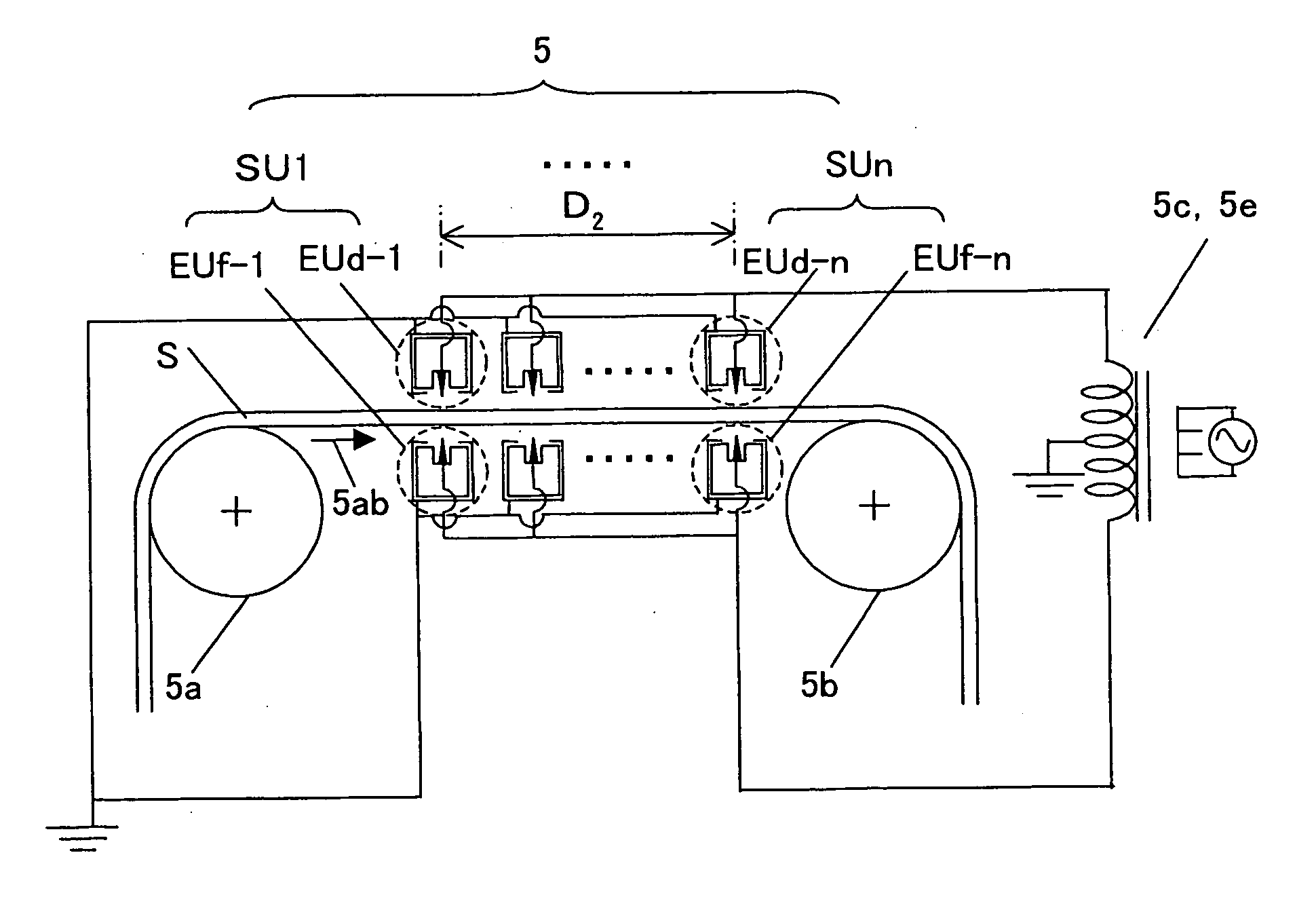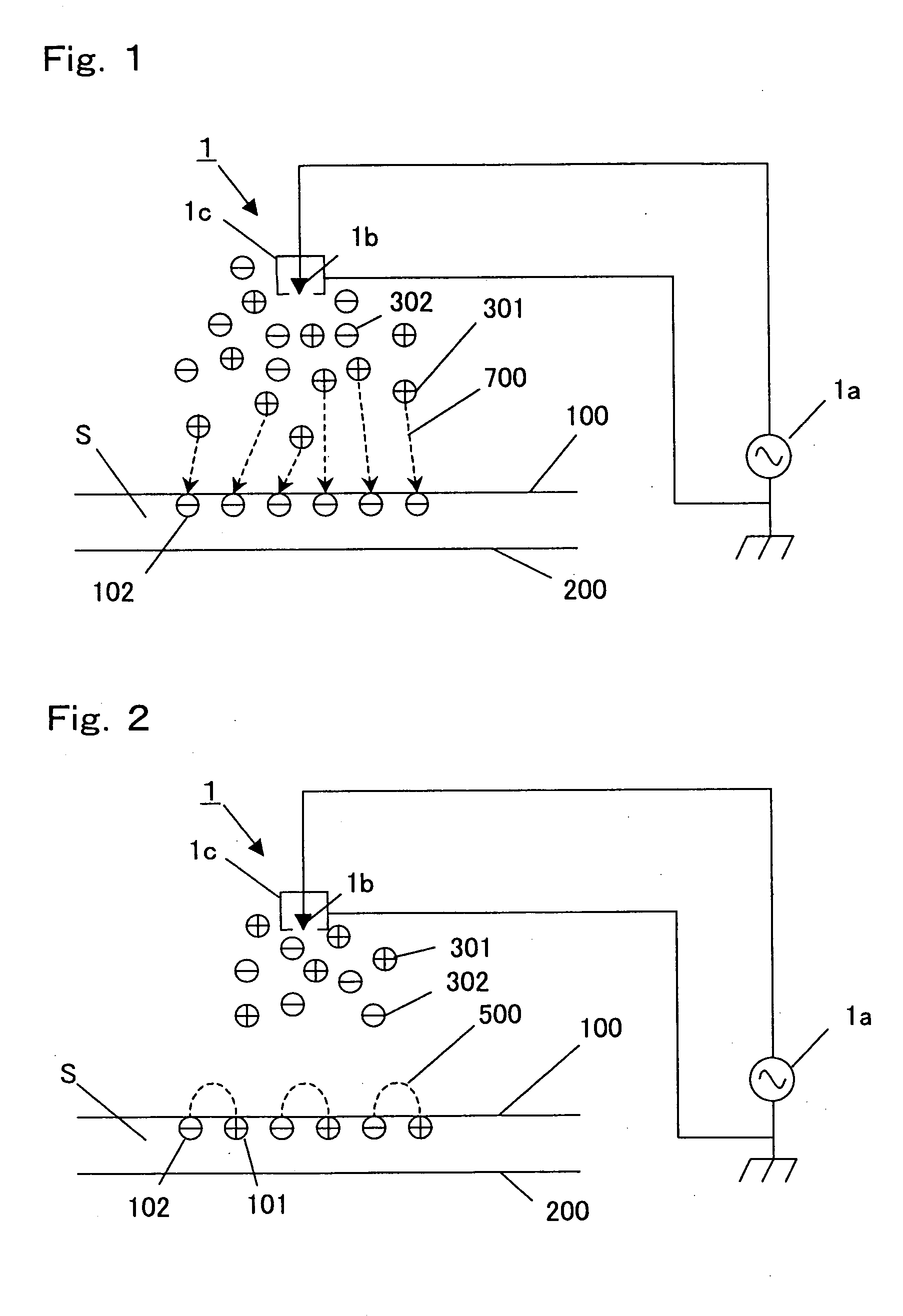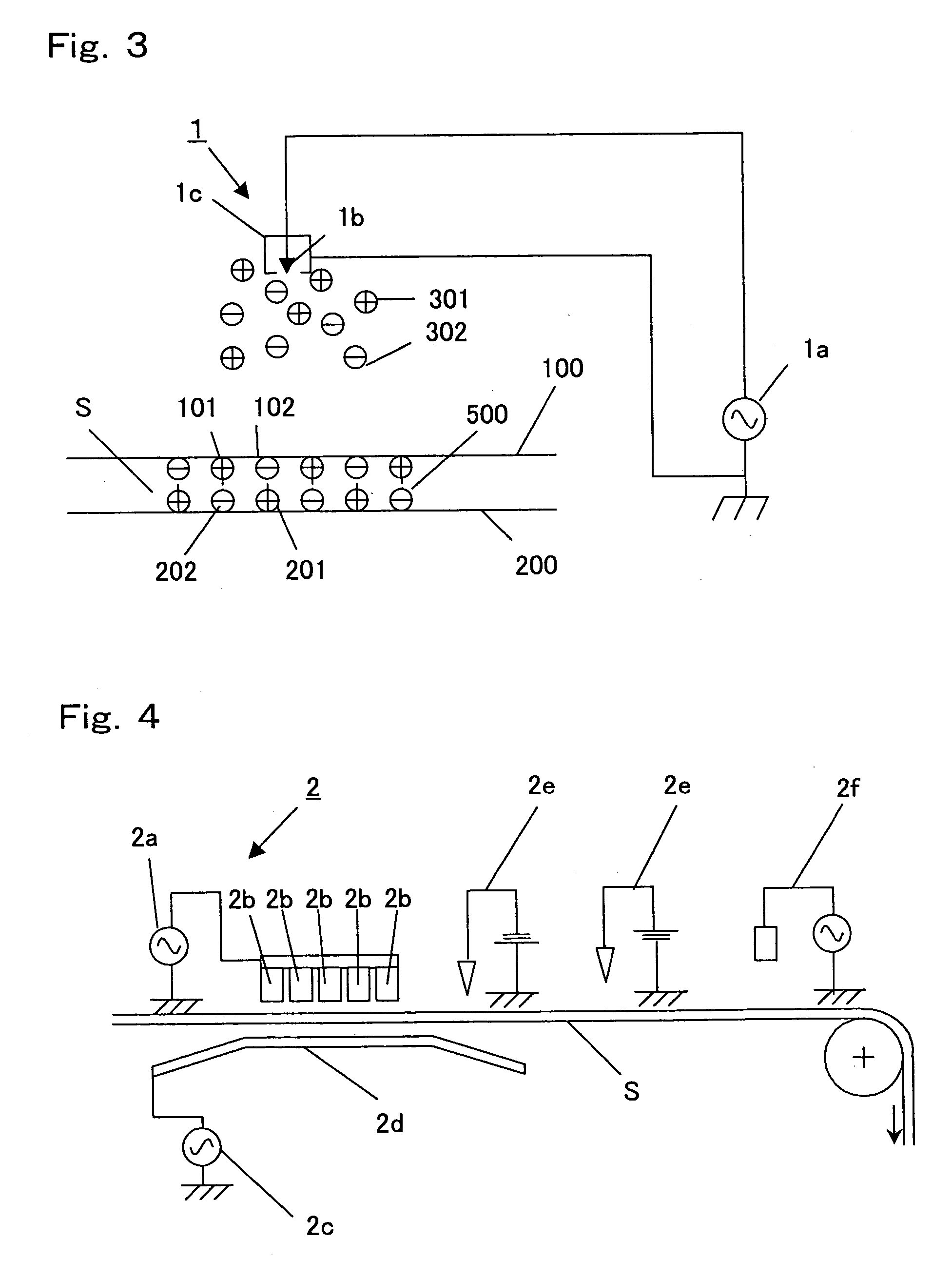Static eliminator and a static eliminating method for an insulating sheet, a method for producing an insulating sheet, and an insulating sheet
a technology of static elimination and insulating sheet, which is applied in the direction of electrostatic charges, emergency protective arrangement details, electrical devices, etc., can solve the problems of disassembly of cut sheets, and achieve the effect of easy elimination
- Summary
- Abstract
- Description
- Claims
- Application Information
AI Technical Summary
Benefits of technology
Problems solved by technology
Method used
Image
Examples
example 7
For the film of Example 1, the rear side equilibrium potentials of the respective surfaces and the charge densities of the respective surfaces were evaluated based on said judgment methods IV-1 and IV-2. The first surface that was smooth to have a magnetic substance had been charged at −7 μC / m2 on the average, and the second surface had been charged at +6.5 μC / m2 on the average.
example 8
Static elimination was carried out according to the same method as described for Example 1, except that a voltage of about +50 V would be applied to the first shield electrodes of the respective static eliminating units, and that a voltage of about −50 V would be applied to the second shield electrodes of the respective static eliminating units. As a result, both the first surface that was smooth and the second surface reverse to the first surface would be charged to be in a range from −2 to +2 μC / m2. These results show that the charge densities of the respective surfaces in absolute value would be decreased. Example 9 and Comparative Example 8:
For the charge distributions of the respective surfaces of the raw film B and the films obtained in Example 3 and Comparative Examples 4 to 6, the charge densities of the respective surfaces were measured based on the measuring methods IV-2. Furthermore, the following were examined: cyclicity, the amplitudes of the charge densities of the ...
examples 13 to 22
, and Comparative Examples 10 to 12
In the static eliminator shown in FIG. 17, a biaxially oriented 300 mm wide 25 μm thick polyethylene terephthalate film (Lumirror 25R75 produced by Toray Industries, Inc.; hereinafter called the raw film E) was used as the insulating sheet S and was made to travel at the speed u (in m / min) shown in Table 6. It was confirmed that the film S was virtually non-charged in the respective surfaces before static elimination.
As the first and second electrode units, discharge electrodes consist of arrays of needle electrodes shown in FIG. 29 were used. The intervals d5 of the needle electrodes in the width direction were 12.7 mm. The first and second electrode units were installed to be perpendicular to the traveling direction of the film S and in parallel to the surfaces of the film S above and below the film S, as static eliminating units. The positions of the tips of the needle electrodes in the width direction in the first and second electrode units ...
PUM
 Login to View More
Login to View More Abstract
Description
Claims
Application Information
 Login to View More
Login to View More - R&D
- Intellectual Property
- Life Sciences
- Materials
- Tech Scout
- Unparalleled Data Quality
- Higher Quality Content
- 60% Fewer Hallucinations
Browse by: Latest US Patents, China's latest patents, Technical Efficacy Thesaurus, Application Domain, Technology Topic, Popular Technical Reports.
© 2025 PatSnap. All rights reserved.Legal|Privacy policy|Modern Slavery Act Transparency Statement|Sitemap|About US| Contact US: help@patsnap.com



